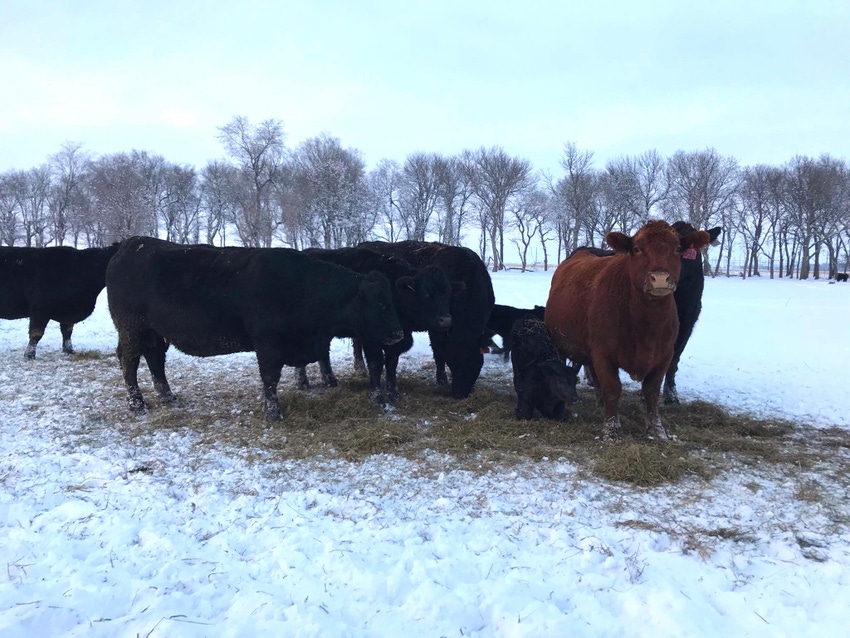A world without beef is just not sustainable
Three talking points for explaining how beef production fits into a sustainable food production system.
March 19, 2018

In today’s society, the one-percenters and vegan elite love to tell us how destructive beef production is to our health and the planet. With their Meatless Monday campaigns, heavily edited YouTube videos, sob stories in the form of ad campaigns, bizarre antics and increasingly loud outcries, it seems like the anti-meat crowd isn’t giving up the crusade any time soon.
Couple that with billions being invested in plant-based and test-tube burgers, and it’s becoming increasingly apparent that the affluent have an agenda based on unrealistic and romanticized ideologies of our food production systems. Their conclusion — cattle just don’t fit into their idea of the perfect diet.
However, Americans are set to eat more meat in 2018 than ever before, according to Bloomberg. In fact, the USDA estimates that we’ll eat 222.2 pounds of red meat and poultry this year. Perhaps the average consumer really doesn’t care what the vegan crowd has to say, and that’s a good thing.
For those who are on the fence about beef in the diet, Sara Place, Ph.D., NCBA senior director, sustainable beef production research, puts to rest some of the most common misconceptions about livestock in a sustainable food system.
In a recent article featured on medium.com, Place explains how the latest research proves that an animal-free food system is just not holistically sustainable.
Place writes, “Let’s be clear, a healthy and sustainable food system depends on having both plants and animals. Researchers at USDA’s Agricultural Research Service and Virginia Tech just published a study in the Proceedings of the National Academies of Sciences confirming this socially debated fact. The study examined what our world would look like without animal agriculture in the U.S. The bottom line? We’d reduce greenhouse gas emissions in the U.S. by 2.6%, and 0.36% globally — but we’d also upset our balanced food ecosystem and lack essential dietary nutrients to feed all Americans.”
Here are three main points Place makes in her article:
1. Cattle consume food that is inedible by humans
Place says, “One important role livestock — such as cattle — play in our sustainable food system is taking human inedible food and ultimately making it nutritious. Specifically, cattle act as upcyclers — meaning they eat grasses and plant matter leftover from human food production and upgrade them into nutritional, high-quality protein. In fact, they produce 19% more edible protein than they consume.”
She adds that according to the United Nations Food and Agriculture Organization, 86% of what livestock eat globally is human-inedible plants and leftovers. What’s more, she says, “research from the National Academies of Sciences, Engineering, and Medicine concluded that human-inedible plants and leftovers make up nearly 90% of a U.S. grain-finished beef animal’s lifetime feed consumption, while less than 10% of what they eat is grain.”
2. Cattle graze on land that is unsuitable for anything else
Place writes, “More than 85% of the land where we graze cattle is not suitable for growing crops because it is too rocky, steep and/or arid to support cultivated agriculture.”
3. Organic foods benefit from cattle manure
“If you eat a USDA-certified organic diet, what’s one of the major fertilizer sources for your vegetables, grains, and other plant foods? Animal manure. What consumes 1.9 billion pounds a year of plant-based leftovers produced by the U.S. human food, fiber, and biofuel industries? Livestock. Without livestock, how would we dispose of these plant-derived leftovers without creating an environmental problem?”
Place concludes, “Rather than continuing to debate what needs to come off our dinner plate all together, let’s start focusing our attention on making the whole plate better. The social battle underway about what type of agriculture is best (local vs. non-local, vegan vs. omnivore, organic vs. conventional, grass-fed vs. grain-fed) is getting us nowhere.
"We need it all for a resilient food system that provides choice and affordable, nutritional options. Our greater opportunity is in improving the food system’s sustainability, such as better soil health, economic viability of farmers, animal welfare, and lower greenhouse gas emissions, regardless of the production system.”
Despite the naysayers, cattle not only fit into a sustainable food production system, they are a critical component of the chain, as well. As producers, we have a great story to tell our consumers, and back at ranch, there are always ways for us to get more forage per acre with best management practices, proper stocking rates and more.
In 2018, as we’re set to produce more than 100 billion pounds of red meat and poultry in the U.S., let’s also increase our efforts to be the great conservationists we’ve always been.
The opinions of Amanda Radke are not necessarily those of beefmagazine.com or Farm Progress.
About the Author(s)
You May Also Like




.png?width=300&auto=webp&quality=80&disable=upscale)
